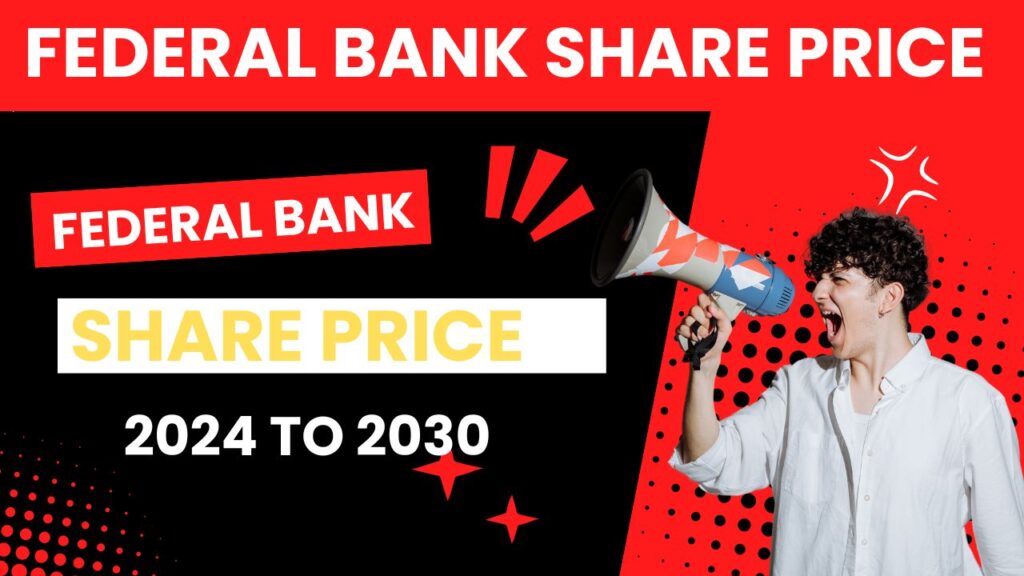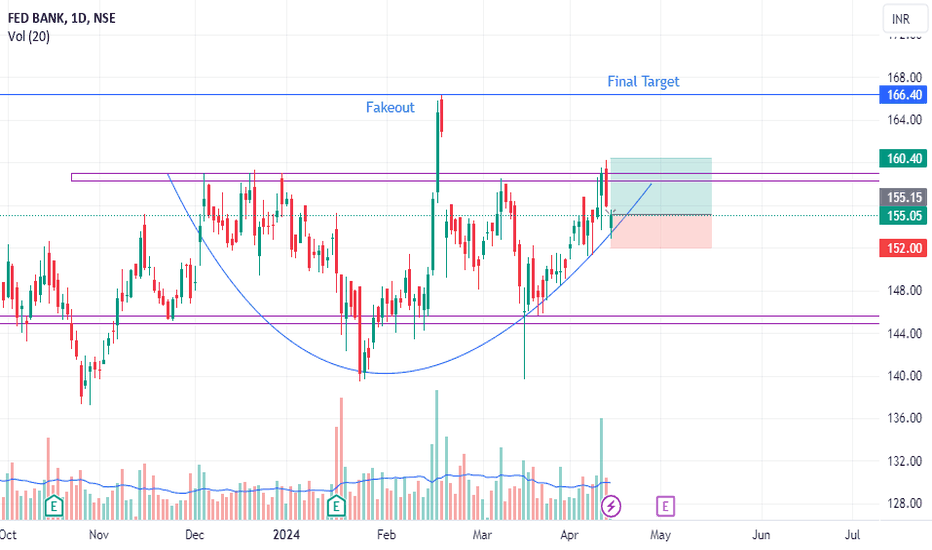Federal bank Share Price Target :- The Federal Reserve, often referred to as the Federal Bank, is the central banking system of the United States. Established in 1913, its primary purpose is to provide the nation with a safer, more flexible, and stable monetary and financial system. The Federal Reserve conducts monetary policy, regulates banks, maintains financial stability, and provides banking services to depository institutions and the federal government.

It consists of a Board of Governors in Washington, D.C., and twelve regional Federal Reserve Banks. By adjusting interest rates and influencing money supply, the Federal Reserve aims to promote maximum employment, stable prices, and moderate long-term interest rates.
Federal bank Share Price Target
Federal bank Share Price Target including those of federal or central banks, can be influenced by a variety of factors, such as interest rates, economic conditions, regulatory changes, and market sentiment. When a central bank, like the Federal Reserve, changes interest rates, it can impact the profitability of commercial banks, subsequently affecting their share prices.
For instance, a rise in interest rates might increase a bank’s net interest margin, boosting profitability and possibly leading to higher share prices. Conversely, regulatory changes or economic downturns can create uncertainty or reduce profitability, potentially leading to lower share prices. Investors often closely watch central bank policies and economic indicators to anticipate shifts in bank share prices, making it a dynamic and closely monitored sector of the stock market.
Company Profile
| Attribute | Details |
|---|---|
| Company Name | Federal Reserve Bank |
| Type | Central Banking System |
| Established | December 23, 1913 |
| Headquarters | Washington, D.C., United States |
| Primary Functions | Monetary policy, bank regulation, financial stability, banking services |
| Structure | Board of Governors, 12 Regional Reserve Banks |
| Chair | Jerome Powell |
| Key Responsibilities | Interest rate setting, bank supervision, lender of last resort |
| Mission | Promote maximum employment, stable prices, and moderate long-term interest rates |
| Main Policy Tools | Open market operations, discount rate, reserve requirements |
| Number of Employees | Approximately 20,000 (across all regional banks) |
| Regions Covered | 12 Federal Reserve Districts across the U.S. |
| Key Legislation | Federal Reserve Act |
| Recent Initiatives | Financial innovation, cybersecurity, payment systems modernization |
| Economic Research | Conducts research on economic conditions and policies |
| Public Outreach | Engages with communities and provides financial education |
| Website | federalreserve.gov |
Fundamentals
| Fundamental | Description |
|---|---|
| Monetary Policy | Controls money supply and interest rates to manage inflation and growth. |
| Regulation | Oversees and regulates banks to ensure stability and compliance. |
| Financial Stability | Acts as lender of last resort to prevent systemic financial risks. |
| Banking Services | Provides payment processing, currency distribution, and banking services to institutions. |
| Economic Research | Conducts research and analysis to inform policy decisions. |
| Public Engagement | Communicates policies and economic outlooks to the public and markets. |
| Payment Oversight | Ensures efficient and secure payment systems and operations. |
| Interest Rate Setting | Sets key interest rates to influence economic activity. |
| Liquidity Provision | Provides liquidity to financial institutions during crises. |
| Consumer Protection | Enforces laws to protect consumer rights in financial transactions. |
| International Collaboration | Works with other central banks and global institutions on economic issues. |
More Read
- Yes Bank Share Price Target
- Top 10 New Companies to Invest in the Stock Market
- PNB Share Price Target
- Best Company In Stock Market
Federal Bank Historical Chart

Federal Bank Share Price Target 2024
| Month (2024) | Maximum Target | MinimumTarget |
| January | Rs – | Rs – |
| February | Rs – | Rs – |
| March | Rs 155.46 | Rs 136.90 |
| April | Rs 154.72 | Rs 134.01 |
| May | Rs 158.03 | Rs 138.12 |
| June | Rs 160.22 | Rs 142.22 |
| July | Rs 162.10 | Rs 147.02 |
| August | Rs 165.93 | Rs 140.11 |
| September | Rs 166.09 | Rs 144.05 |
| October | Rs 169.14 | Rs 145.02 |
| November | Rs 170.83 | Rs 151.90 |
| December | Rs 173.06 | Rs 154.37 |
Federal Bank Share Price Target 2025
| Month (2025) | Maximum Target | MinimumTarget |
| January | Rs 174.15 | Rs 158.08 |
| February | Rs 179.96 | Rs 161.55 |
| March | Rs 177.95 | Rs 163.80 |
| April | Rs 176.01 | Rs 163.04 |
| May | Rs 180.91 | Rs 162.99 |
| June | Rs 182.22 | Rs 165.00 |
| July | Rs 181.51 | Rs 168.06 |
| August | Rs 184.92 | Rs 170.23 |
| September | Rs 189.41 | Rs 171.76 |
| October | Rs 190.02 | Rs 173.04 |
| November | Rs 193.22 | Rs 177.90 |
| December | Rs 195.18 | Rs 179.00 |
Federal Bank Share Price Target 2026 to 2030
| Year | Maximum Target | Minimum Target |
|---|---|---|
| 2026 | Rs 223.25 | Rs 188.00 |
| 2027 | Rs 248.08 | Rs 199.82 |
| 2028 | Rs 270.00 | Rs 210.00 |
| 2029 | Rs 298.09 | Rs 224.95 |
| 2030 | Rs 329.47 | Rs 237.06 |
FEDERALBNK: NSE Financials 2023
Federal Bank Market Capitalisation: 36,586.96 Crores INR
Federal Bank Reserves and Borrowings: 21,083.00 Cr INR and 19,319.29 Cr INR (March 2023) Respectively
Federal Bank 52 Week High-Low: Rs 166.35 – Rs 121.00
Revenue
| Revenue | 94.74 Billion INR | ⬆ 30.89% YOY |
| Operating expense | 52.11 Billion INR | ⬆ 13.48% YOY |
| Net Income | 31.65 Billion INR | ⬆ 60.66% YOY |
| Net Profit Margin | 33.40 | ⬆ 22.75% YOY |
| Earnings Per Share | 14.13 | ⬆ 55.96% |
| EBITDA | ||
| Effective Tax Rate | 25.30% | |
| Total Assets | 2.68 Trillion INR | ⬆ 18.46% YOY |
| Total Liabilities | 2.46 Trillion INR | ⬆ 18.80% YOY |
| Total Equity | 224.74 Billion INR | |
| Return on assets | 1.30% | |
| Return on Capital | ||
| P/E Ratio | ||
| Dividend Yield |
Federal Bank Shareholding Pattern
- Promoters: 35.23%
- FII: 29.38%
- DII: 8.16%
- Retail & Others: 27.23%
- Mutual Funds: –
Federal Bank Ltd Competitors (Market Cap: 36,586.96 crores INR
- HDFC Bank Market Cap: 1114432.46 crores INR
- Axis Bank Market Cap: 332,648.78 crores INR
- IDBI Bank Market Cap: 84,890.22 crores INR
- Yes Bank Market Cap: 62,134.76 crores INR
- IDFC First Bank Market Cap: 55,353.79 crores INR
- Bandhan Bank Market Cap: 29,827.10 crores INR
Points to consider before investing in Federal Bank Stock
Federal bank Share Price Target
- Investment Type: Understand that Federal Reserve stock is not publicly traded. It’s held by member banks, and the stock is non-transferable. For investments related to central banks, consider investing in commercial banks or financial institutions influenced by Federal Reserve policies.
- Regulatory Environment: Be aware of the regulatory framework governing central banks and financial institutions. Changes in regulations or monetary policy can impact investment performance.
- Monetary Policy Impact: Federal Reserve policies, such as changes in interest rates, can significantly affect the profitability of banks and financial institutions. Monitor the Fed’s monetary policy decisions and their potential impact on your investment.
- Economic Indicators: Keep an eye on key economic indicators, such as inflation rates, employment data, and GDP growth, as these can influence the financial sector’s performance.
- Financial Health: Evaluate the financial health and stability of the bank or financial institution you are considering. Review financial statements, profitability metrics, and risk management practices.
- Dividend Yields: For banks that do issue publicly traded stock, consider dividend yields and payout ratios. Understand how dividends are affected by Federal Reserve policies and economic conditions.
- Risk Management: Assess the risk profile of the investment. Central bank policies can create market volatility, so ensure you understand the associated risks.
- Long-Term Trends: Analyze long-term trends and historical performance of the sector or institution. Consider how well it has weathered past economic cycles and policy changes.
- Diversification: Ensure that investing in Federal Reserve-related assets fits within a diversified portfolio strategy. Avoid overexposure to a single sector or asset class.
- Market Sentiment: Pay attention to market sentiment and investor perceptions of the financial sector. Market trends and confidence can influence stock performance.
FAQ
Can I buy stock in the Federal Reserve Bank?
A. No, it is not publicly traded
Who owns Federal Reserve Bank stock?
Member banks own it.
Is Federal Reserve stock transferable?
No, it is non-transferable.
What is the purpose of Federal Reserve stock?
It allows member banks to participate in governance.
Do member banks receive dividends on Federal Reserve stock?
Yes, they receive a fixed dividend
How can I invest in the financial sector influenced by the Federal Reserve?
Invest in publicly traded banks and financial institutions.
What is the Federal Reserve Bank?
The Federal Reserve Bank is the central banking system of the United States, responsible for monetary policy and financial stability.
When was the Federal Reserve Bank established?
It was established on December 23, 1913.
Where is the Federal Reserve Bank headquartered?
Its central governing body, the Board of Governors, is headquartered in Washington, D.C.
